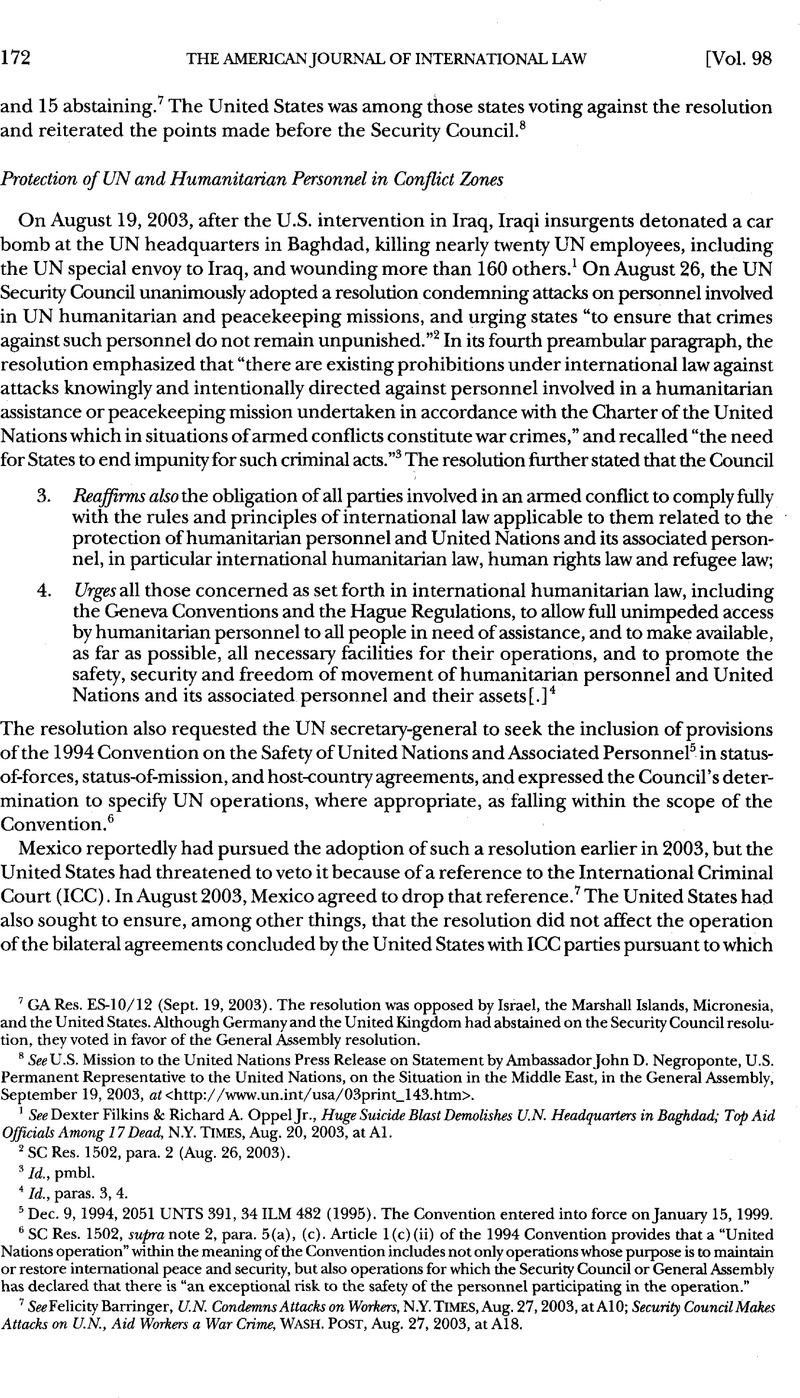No CrossRef data available.
Published online by Cambridge University Press: 10 March 2017

1 See Filkins, Dexter & Richard, A. Oppel Jr., Huge Suicide Blast Demolishes UN Headquarters in Baghdad; Top Aid Officials Among 17 Dead, N.Y. Times, Aug. 20, 2003, at A1.Google Scholar
2 SC Res. 1502, para. 2 (Aug. 26, 2003).
3 Id., pmbl.
4 Id., paras. 3, 4.
5 Dec. 9, 1994, 2051 UNTS 391, 34 ILM 482 (1995). The Convention entered into force on January 15, 1999.
6 SC Res. 1502, supra note 2, para. 5(a), (c). Article 1(c) (ii) of the 1994 Convention provides that a “United Nations operation” within the meaning of the Convention includes not only operations whose purpose is to maintain or restore international peace and security, but also operations for which the Security Council or General Assembly has declared that there is “an exceptional risk to the safety of the personnel participating in the operation.”
7 See Barringer, Felicity, UN Condemns Attacks on Workers, N.Y. Times, Aug. 27, 2003, at A10 Google Scholar; Security Council Makes Attacks on U.N., Aid Workers a War Crime, Wash. Post, Aug. 27, 2003, at A18 Google Scholar.
8 For background on those agreements, see Sean, D. Murphy, Contemporary Practice of the United States, 97 AJIL 200 & 711 (2003).Google Scholar
9 UN Doc. S/PV.4814, at 3 (Aug. 26, 2003).
10 Id. at 4.